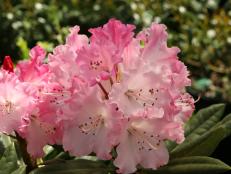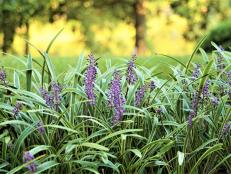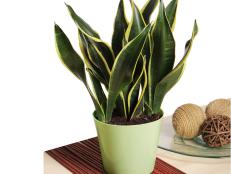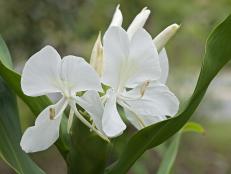How to Plant and Grow Angel’s Trumpet
Dial up the drama in your garden with an angel’s trumpet plant, a tropical bloomer that’s a cinch to grow.

Getty Images/Angelafoto
If you want to add stunning color to your garden, look no further than angel’s trumpet. This exotic beauty can’t help but make a statement however you use it — in a container or garden bed. Known botanically as Brugmansia, angel’s trumpet plants unfurl dangling flowers that cascade from 4 to 24 inches long, depending on the cultivar or species. Blossom colors include gold, orange, white, pink and peach.
Most angel’s trumpet blossoms release a rich fragrance toward dusk. The scents are rich and pervasive, the perfect accompaniment to a warm summer evening of stargazing. The floral perfume contains hints of many fragrant favorites, including lily, musk, citrus, gardenia and jasmine. Suffice to say, it’s a tough-to-miss aroma that fills summer nights with a touch of the tropics.
Growing Angel’s Trumpet
Angel’s trumpet hails from South America, where it typically grows on the slopes of the Andes Mountains. That mountain climate delivers warm, humid days and cool nights — the ideal combination for this plant to thrive. Angel’s trumpet is winter hardy in Zones 8 and warmer. In cooler regions, it’s best to grow it in a pot and overwinter it indoors.
In its native environs, an angel’s trumpet plant can grow 15 to 20 feet tall, forming a shrub. In containers, you can expect your plant to grow from 4 to 15 feet tall (larger pots yield larger plants). In areas where angel’s trumpet isn’t winter hardy, it’s a good idea to start with as big a plant as you can afford. Garden centers often sell this bloomer in a 2-quart or larger container. Tuck it into a minimum 14-inch-wide pot to enjoy the strongest flower show.
Best Care Tips for Angel’s Trumpet
Sunlight
For angel’s trumpet to thrive, grow it in a spot with full sun. In warmest regions, provide shade during the hottest part of the afternoon or place your plant where it will receive dappled sunlight through the day, such as beneath a spreading tree.
Soil
If you’re tucking an angel’s trumpet plant into the ground, choose a spot with well-drained soil. Dig a larger planting hole than the plant actually needs and amend the soil you remove with plenty of organic matter, such as compost, bark fines, well-rotted leaf mold or other locally available material. In containers, choose a commercial soil blend developed for use in pots. Angel’s trumpet plants also grow well in bagged mixes designed for azaleas or camellias. Whatever soil you use, it needs to drain well.
Water
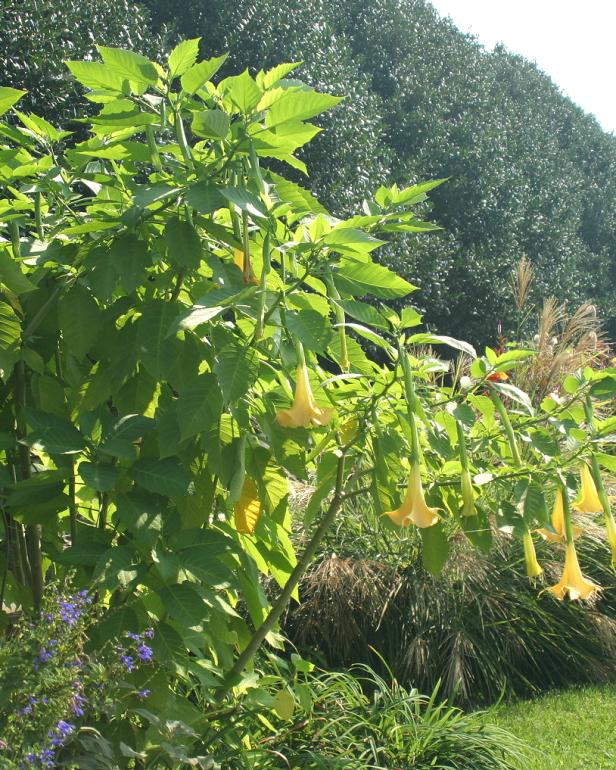
Most angel’s trumpet blossoms release a rich fragrance toward dusk. The floral perfume contains hints of many fragrant favorites, including lily, musk, citrus, gardenia and jasmine.
Make sure your containers have drainage holes, but definitely use a saucer beneath pots once plants are actively growing and unfurling new leaves. A large angel’s trumpet needs ample water to fuel its growth and flowering. In the hottest part of summer, expect to water container plants daily. In planting beds you won’t need to water as often. Angel’s trumpet plants have thin leaves that wilt readily when soil is dry. If this occurs, simply water plants as soon as you can.
Fertilizer
During the peak growing season, angel’s trumpet has a huge appetite. The more you feed plants, the more flowers you’ll see — but you don’t want to over-fertilize because that could harm plants. Aim to fertilize plants in pots weekly or even twice a week using water-soluble plant food. Slow-release fertilizers typically don’t work fast enough to sustain the heavy blooming. It’s okay to mix a slow-release product into soil at planting time (compost counts for in-ground plants), but then once the second new leaf has unfurled, start feeding plants with a water-soluble product.
Pruning
Prune angel’s trumpet as needed to shape or remove crisscrossing branches, a condition that’s more typical with larger, mature plants. Keep the area beneath plants clean, removing dropped leaves or spent flowers. This helps reduce pest and disease outbreaks.
Keeping Angel’s Trumpet Through Winter
As a tropical plant, angel’s trumpet grows best when air is warm — above 60 degrees it will grow and flower year-round. In colder regions, stop fertilizing and reduce watering in late summer to early fall. If you plan to grow plants through winter, definitely spray for insects prior to shifting inside. Angel’s trumpet plants are magnets for whiteflies and spider mites, two pests that can be impossible to eradicate if they are unleashed into an existing indoor plant collection.
A better option is to let an early cold snap cause plants to drop leaves. When temperatures take a brief tumble into the upper 30s one night, that should trigger plants to drop leaves. At this point, you can prune stems back by one-third, although it’s not necessary.
Before the first fall frost (32 degrees) arrives, move plants indoors. Angel’s trumpet will overwinter in a dormant state if you store it in a cool, frost-free dark spot. Ideal winter storage temps are 35 degrees to 45 degrees. Water lightly a few times through winter — just enough to keep the roots alive. If small shoots appear, let them grow. It’s a sign your plant is alive.
In spring when temperatures are in the low 40s, shift your plant outdoors. To rejuvenate your angel’s trumpet, slide it from the pot and use a knife and/or pruners to remove roughly 2 inches from the root ball. If you break roots, that’s okay. This process is known as “root pruning.” It’s the secret to growing what would naturally be a large plant in a pot for its entire lifetime.
Repot with fresh soil, followed by water and a dose of fertilizer. Prune away any dead branch tips. Also prune to shape at this point. Your angel’s trumpet will resprout and flourish as the season gets underway.
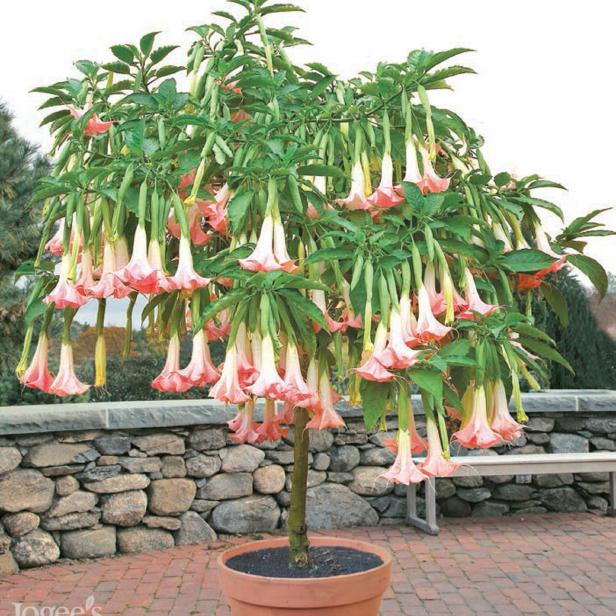
Logee's Plants
The secret to success with angel's trumpet is to give it warmth and the brightest light you can.
For angel’s trumpet plants growing in the ground: If the plant isn’t winter hardy in your region, prune and dig the plant, saving it over winter as a dormant plant. Established angel’s trumpet plants can be tough to dig up — they can have roots the size of your forearm. So you might also consider treating it as an annual and simply purchase a new plant the following growing season.
In areas where angel’s trumpet is winter hardy, severe cold snaps can damage plants. If that occurs, it’s okay to prune the plant for aesthetics when temperatures return to normal winter levels. In spring, tackle more drastic pruning to shape the plant as needed.
Use Caution with Angel’s Trumpet
Angel’s trumpet plants are members of the nightshade family, a poisonous plant group. All parts of angel’s trumpet contain tropane alkaloids, which produce a variety of symptoms when consumed, including hallucinations, rapid heartbeat, high blood pressure, grand mal seizures, coma and death. Flowers and seeds are the most toxic parts of the plant.
The toxins affect pets as well as people. Keep the area around your angel’s trumpet plant free of any plant debris — leaves, flowers or seed pods. Although the plant must be eaten or ingested to produce the toxic effects, it’s always a good idea to wash your hands after working with angel’s trumpet in case you have the plant’s volatile oils on your skin.








